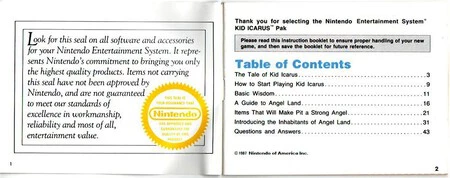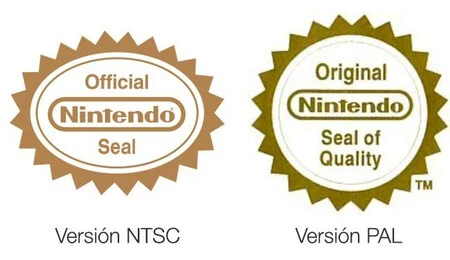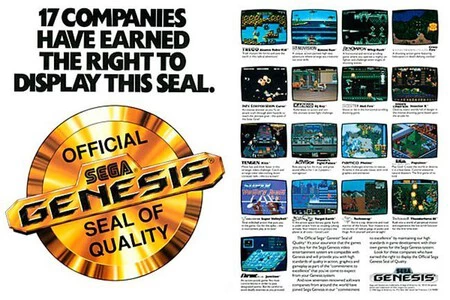The story is peppered with ideas that at first might seem like insignificant details, but that in the long run became the triggers for big changes, in unexpected revolutions that could hardly be anticipated. We also find cases like this in the short but intense trajectory of video games as an industry.
A perfect example of this is the mythical Nintendo Seal of Quality, whose printing you will all associate with titles for the different systems developed by the Kyoto house for years. We have seen it so many times that we have ended up accepting it as another aesthetic component of the packaging, but the truth is that this badge has an important story behind it that is worth knowing.
For practical purposes, it was a small gesture that began to be applied in the mid-eighties, a particularly turbulent time for this business, but behind it was a studied campaign that helped the Big N become the great cultural and business it has become. But before talking about him, let’s try to understand the context prior to his appearance.
In the beginning there was only chaos
I’m sure you’ve all heard of the video game crisis of 1983, the one that was about to end all traces of a business that was derailed by boundless greed and the prevailing lack of creative talent. During the beginning of the decade a bubble was generated that burst violently, leading to the closure of numerous companies within two years and a decline in profits for the sector of almost 97%. A real barbarity.
The second generation of consoles was led by the Atari 2600, against which numerous alternatives such as ColecoVision, Magnavox Odyssey or Intellivision were lined up, as well as the growing market for personal computers, and in all cases we found an essential common denominator to understand the crack of 83: neither Atari, nor the rest of the companies that tried to compete with it, had real control over the catalog of games that reached the stores.
As a consequence, any cheeky man with the necessary knowledge could be encouraged to launch a three-for-four title without having to worry much about the long-term consequences, trying to get as much money as possible before anyone noticed the puff. If it seems to you that titles of debatable quality are coming to the market today, you should see the stuff that appeared on the shelves at that time. Naturally, there came a point where people began to get tired of being sold the motorcycle with impunityso consumer confidence in the video game industry plummeted, and with it profits.
But not everything was a matter of a few minor titles that arrived without control on the shelves: the big studios and the prestigious licenses also added gunpowder to the explosion. Especially infamous are cases like the port of Pac-Man to the Atari 2600 or the thousand times remembered ET, true disasters of a multimillion-dollar nature. The American video game industry had failed miserably, but a few Japanese were determined to succeed by learning from so many mistakes.
One seal to unite them all
Nintendo was clear: letting anyone sully your brand new console with a game developed without any control was not a serious path to follow for an industry that moved so many millions a year. His response on a technical level was the chip 10NES, a blocking system that was installed in western models of its first console to prevent unauthorized software from running on it. Naturally, like so many other protection systems, it was not infallible, but it was the first stone that would be accompanied by the corresponding response at the marketing level.

I am referring, of course, to the mythical quality seal which served to indicate to the consumer, logically distrustful of the number of bad plays experienced during the previous years, that he could spend his money on said title calmly because there was behind a great company that had made sure they weren’t getting a pig in a poke. In its first version, implemented in the North American market with the western release of the NES in 1985, the stamp showed the following text:
This seal ensures that Nintendo has approved and guarantees the quality of this product.
The seal was accompanied by a more detailed explanation of its function and its conditions in the corresponding instruction manuals, in case there was any doubt. Those of us who lived through that time will also remember the insistence that Nintendo made through all its commercial actions on the importance of looking for this badge on the games we bought, thus declaring its firm commitment to prevent its customers from being involved again in the nightmare from which they were still waking up .
As is well known, the strategy worked perfectly, and the console managed to succeed in what everyone already saw as a dying market with no future. In the end, the mythical seal was nothing more than the visible representation of a global philosophy that included product control, honesty when promoting it (both in the catches included in the boxes and in the qualification of its content). and the establishment of minimum standards that made it possible to reverse an unsustainable situation. Since then, the closing of doors has been the dominant note in the consoles that have been reaching the market, with merely marginal exceptions and with no real impact on the future of the product such as the Net Yaroze.
Evolution and decline of the importance of the seal
The original version of the stamp in the North American market was circular, with a black background and contained the text that I have presented before. In 1989 it changed to the oval version with a white background that has been common in that territory, reducing the text to “Official Nintendo Seal of Quality”; in 2003, it was further simplified, leaving the emblem at “Official Nintendo Seal”. For its part, the PAL version has always been circular and has been presented as “Original Nintendo Seal of Quality”.

When asked about the most important innovations in the evolution of the video game, the developer Sid Meier, father of the saga civilization, pointed to this seal as a fundamental piece, being able to put an end to the avalanche of shovelware that was covering everything. It’s impossible to imagine what would have happened to the industry if it hadn’t been as decisive a move as Nintendo’s, but rest assured that nothing would have been the same (and quite possibly it would have been for the worse).
And in case you were wondering, there were titles that failed to meet the requirements and were released without a license, such as the compilation Action 52, which included fifty small-time action games, loaded with errors and in many cases blatantly plagiarizing works that were already on the market. To add insult to injury, the product was put up for sale for almost two hundred dollars under the promise that such a number of games would be worth the outlay. And I already tell you no.
After all, with the NES, cases like this became exceptions and you already knew what you were exposing yourself to if you wanted to get out of the limits imposed by Nintendo with its label. Fortunately, over the years, consumers have accepted as a natural fact that every game released to the market comes from a professional studio, so it is normal that time has caused the label’s importance to decline until it became a mere decorative element.
Others tried too
Of course, Nintendo’s genius idea has had its imitators, with its main competitor at the time being the first to try to replicate the idea. Sega’s seal of quality It appeared not long after, although in this case it was not an essential requirement to be able to publish the games by third parties, but a badge used promotionally by those who managed to reach it.

In addition, in the case of Sega, there was no impediment to the use of violent or bloody content to obtain the certificate, so that titles that would hardly have complied with the policy of zero tolerance towards material only suitable for adults of the Big N could obtain it. , as Splatterhouse 2 either techno cop. However, content of a sexual nature was strictly censored by Sega.
This policy of highlighting a special level of quality above the average was drifting over time into a more functional issue, and this emblem also lost importance in the eyes of the company and consumers until it disappeared completely along with the development of consoles by from Sega.
In ExtraLife | The surreal origin of the name of Donkey Kong, or how a translation error almost led Nintendo to bankruptcy


